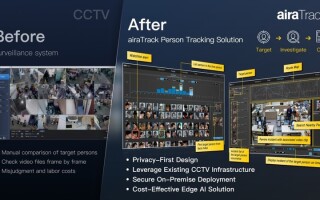One-stop shops, companies wanting the complete solution
April 01, 2016

In its youth, the embedded industry was far less open than it is today. Innovators were keen to keep their advances under wraps for competitive gain,...
In its youth, the embedded industry was far less open than it is today. Innovators were keen to keep their advances under wraps for competitive gain, and few companies offered any kind of complete solution. Often the expectation from those early embedded experts was that anyone considering their first embedded development must become an expert themselves to be worthy of entering that exclusive club.
In their limited defense, as our industry was far more niche than it is today, new and early adopters often dictated a tremendous level of technical support required, which embedded manufacturers weren’t prepared to provide without a solid business case. Simultaneously, most early embedded vendors specialized in a particular area, be that board-level product, displays, industrial I/O interfaces, or embedded operating systems and software.
Arguably, our hypothetical new developer wasn’t particularly interested in the embedded integration side. The developer undoubtedly possessed industry-specific core competency (i.e. dynamic positioning), and task at hand was merely to transplant that core competency into a workable embedded platform. This should have been easy, but it wasn’t.
The industry’s attitude back then demanded that developers deviate from their own primary skill sets to travel that steep learning curve of early embedded computing, purely to satisfy the heavy integration requirements of components sourced from multiple vendors. Support attitudes from these vendors – which were doomed to failure and frankly untenable – meant no board manufacturer would assist in integrating a third-party display and vice versa. The onus was always on the integrator, and compatibility was never guaranteed.
Thankfully, embedded vendors changed their attitudes over time, pre-integrating popular third-party components with theirs and eventually expanding their scope to include those peripheral components themselves, but there was always at least one omission. Embedded vendors were no longer simply board manufacturers; they became hardware vendors providing complete hardware solutions – but not the software.
Efforts were made to bridge those gaps outside of these hardware vendors. Board support packages and software development kits increasingly emerged to at least support clients in areas they couldn’t encompass themselves.
Today, I see the expectation is where I believe it should be. I’ve always pushed for individuals and companies to focus on their core competency and outsource anything that isn’t to a party whose is. Companies now have to focus heavily or exclusively on innovation of their own core competency and expect an embedded vendor to simply take this and produce a product from it – hardware, firmware, software, certification – the lot.
They not only want to outsource the product’s development, but often its path to market. They see no advantage in managing various parties to do so, else they might as well do this internally as it still requires a high level of management. Forward-thinking embedded vendors that offer complete product design, manufacture, certification, and production allow a new product development to have zero impact on the activities of the company and are what I believe to be the future of embedded computing realization.




